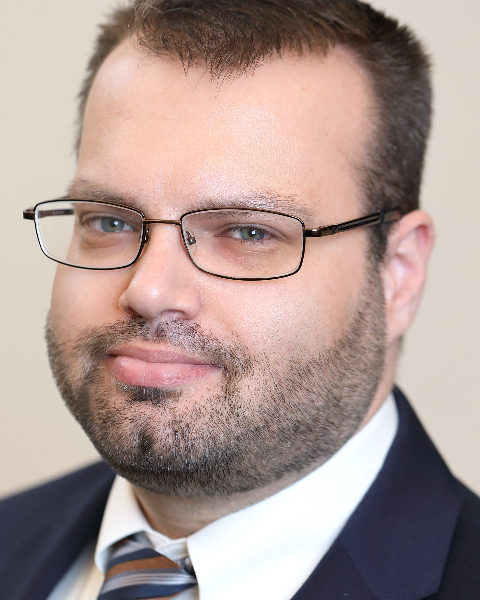SS 03 - Phys 1: Dosimetry and Treatment Planning
114 - Results of a Dose Reconstruction Effort for a Large-Scale Retrospective Study on Late Health Effects Following Radiotherapy within the National Wilms Tumor Study
Sunday, September 29, 2024
8:40 AM - 8:50 AM ET
Location: Room 147

Matthew Mille, PhD
National Cancer Institute
Rockville, MD
Presenter(s)
M. Mille1, M. Gopalakrishnan2, J. W. Jung3, K. T. Griffin1, C. Lee4, J. A. Kalapurakal5, and C. Lee1; 1National Cancer Institute, National Institutes of Health, Rockville, MD, 2Northwestern University, Chicago, IL, 3Department of Radiation Oncology, Brody School of Medicine, East Carolina University, Greenville, NC, 4Department of Radiation Oncology, University of Michigan, Ann Arbor, MI, 5Department of Radiation Oncology, Northwestern University, Chicago, IL
Purpose/Objective(s): As the survival rates of childhood cancer improve, it becomes increasingly important to study the impact of multi-modality therapies on long-term health. Radiotherapy has been implicated as a contributor to late toxicities such as second malignant neoplasms and cardiovascular disease; however, there are still significant gaps in knowledge. Indeed, survivors presenting with late health effects today were treated before the widespread availability of 3D imaging and radiotherapy planning. However, without 3D organ dosimetry, it is difficult to translate the knowledge gained from past treatments into the dose tolerance criteria needed for improving outcomes for patients treated today. The National Wilms Tumor Study (NWTS) provides a unique opportunity to bridge this gap. This paper describes the methods, workflow, and results of a multi-year effort to reconstruct radiotherapy organ doses for the NWTS cohort in support of late effects research. Materials/
Methods: We reconstructed 3D organ doses for 4716 pediatric patients in the NWTS cohort. As CT images were not available for the NWTS patients, computational phantoms were selected from a body-size dependent phantom library to use as surrogate anatomy. Each patient was matched to a phantom in the library based on gender, height, and weight at age of Wilms tumor diagnosis. A DICOM CT image set and structure file for the matched phantom was then imported into a treatment planning system (TPS) for reconstruction of the radiotherapy fields according to paper medical records. The radiotherapy planning was performed by an experienced medical physicist under the supervision of a radiation oncologist familiar with protocols used during the NWTS trials. As the accuracy of the TPS is limited in the out-of-field region, Monte Carlo radiation transport calculations were also performed to improve the organ dose estimates. All calculations were performed on the NIH high-performance computing cluster.
Results: The patients were treated with a variety of photon energies: 4 MV (23%), 6 MV (48%), 10 MV (3%), Co-60 (23%), and other (3%). The most common treatment fields were left and right-flank, abdomen, and chest. The Monte Carlo dose calculations took approximately ~100 CPU hours (wall clock time ~2 hours) for a typical patient, resulting in approximately 0.5 million CPU hours in total for the cohort. Mean organ dose and dose-volume metrics were computed for more than 100 organs or tissues.
Conclusion: This study represents the first time Monte Carlo methods have been directly applied on a large scale to reconstruct organs doses for an epidemiological cohort. The organ doses for the NWTS cohort will provide valuable information for developing dose tolerance criteria for mitigating radiotherapy toxicity.
Purpose/Objective(s): As the survival rates of childhood cancer improve, it becomes increasingly important to study the impact of multi-modality therapies on long-term health. Radiotherapy has been implicated as a contributor to late toxicities such as second malignant neoplasms and cardiovascular disease; however, there are still significant gaps in knowledge. Indeed, survivors presenting with late health effects today were treated before the widespread availability of 3D imaging and radiotherapy planning. However, without 3D organ dosimetry, it is difficult to translate the knowledge gained from past treatments into the dose tolerance criteria needed for improving outcomes for patients treated today. The National Wilms Tumor Study (NWTS) provides a unique opportunity to bridge this gap. This paper describes the methods, workflow, and results of a multi-year effort to reconstruct radiotherapy organ doses for the NWTS cohort in support of late effects research. Materials/
Methods: We reconstructed 3D organ doses for 4716 pediatric patients in the NWTS cohort. As CT images were not available for the NWTS patients, computational phantoms were selected from a body-size dependent phantom library to use as surrogate anatomy. Each patient was matched to a phantom in the library based on gender, height, and weight at age of Wilms tumor diagnosis. A DICOM CT image set and structure file for the matched phantom was then imported into a treatment planning system (TPS) for reconstruction of the radiotherapy fields according to paper medical records. The radiotherapy planning was performed by an experienced medical physicist under the supervision of a radiation oncologist familiar with protocols used during the NWTS trials. As the accuracy of the TPS is limited in the out-of-field region, Monte Carlo radiation transport calculations were also performed to improve the organ dose estimates. All calculations were performed on the NIH high-performance computing cluster.
Results: The patients were treated with a variety of photon energies: 4 MV (23%), 6 MV (48%), 10 MV (3%), Co-60 (23%), and other (3%). The most common treatment fields were left and right-flank, abdomen, and chest. The Monte Carlo dose calculations took approximately ~100 CPU hours (wall clock time ~2 hours) for a typical patient, resulting in approximately 0.5 million CPU hours in total for the cohort. Mean organ dose and dose-volume metrics were computed for more than 100 organs or tissues.
Conclusion: This study represents the first time Monte Carlo methods have been directly applied on a large scale to reconstruct organs doses for an epidemiological cohort. The organ doses for the NWTS cohort will provide valuable information for developing dose tolerance criteria for mitigating radiotherapy toxicity.
